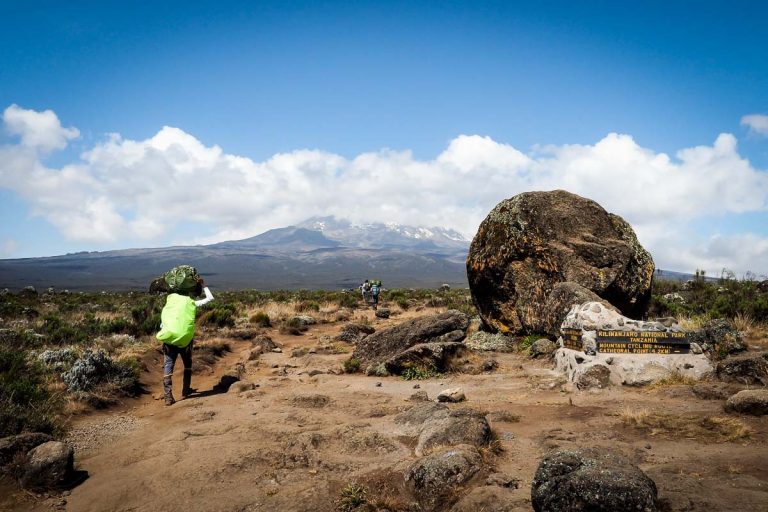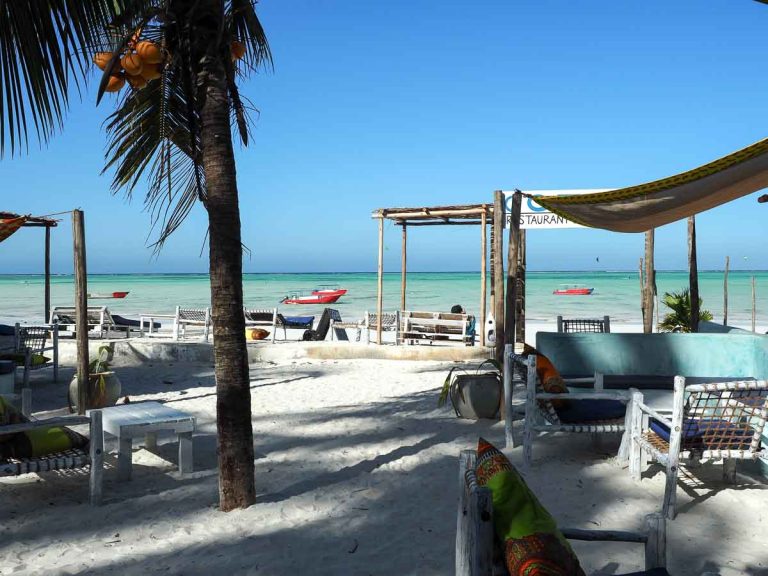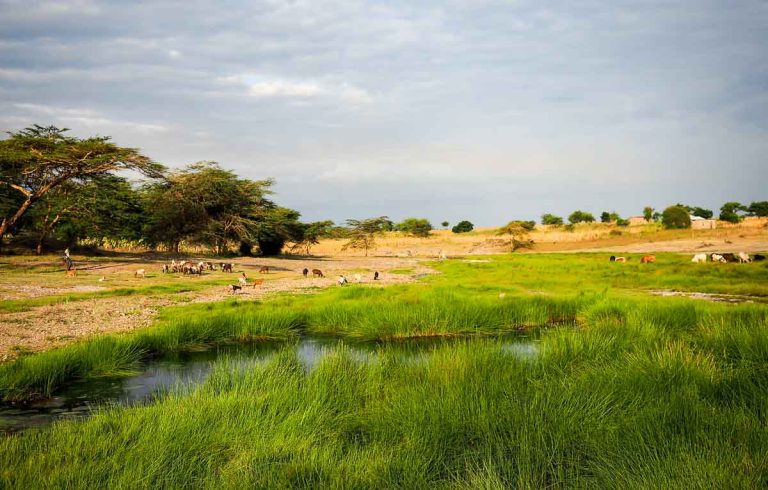Do You Need Diamox To Climb Kilimanjaro
As someone who has climbed Kilimanjaro, I know how daunting it can be to prepare for such a journey. One of the most important aspects of preparing for your climb is understanding the role that Diamox, or Acetazolamide, may play in your acclimatization process.
Diamox helps you acclimatize to high altitudes quicker, which is important given on Kilimanjaro you’ll ascend around 5,000m in 5 days. Diamox does not ‘treat’ altitude sickness. How your body handles high altitudes is largely decided by genetics so if you don’t know how your body fares it’s a good idea to consult a doctor before your trip and pack some diamox to take with you.
Keep reading as I explain how medication like Diamox can help your climb and what i did on my trip
Table of Contents
What exactly is Diamox?
Diamox is a medication that is typically used to treat glaucoma, epilepsy, and altitude sickness. It works by reducing the amount of bicarbonate in the body, which helps to increase the acidity of the blood. This process helps the body to acclimatize to higher altitudes more quickly.
It’s important to understand that Diamox does not treat altitude sickness. It helps the body acclimatize quicker which in turn reduces the probability of getting altitude sickness.
Diamox is a brand-name drug of the medication ‘acetazolamide’ and can be substituted with a generic off-brand version.
| Property | Description |
|---|---|
| Active Ingredient | Acetazolamide |
| Side Effects | Tingling in the fingers and toes, increased urination, changes in taste |
| Dosage | 125 mg twice daily; may be adjusted based on individual needs |
| Price | Varies depending on location and insurance coverage |

How does Diamox (Acetazolamide) work?
Diamox works by stimulating the kidneys to excrete bicarbonate, which causes the body to become more acidic. This change in pH causes the body to breathe more, which in turn increases the amount of oxygen in the body. The increased oxygen levels allow the body to acclimatize more quickly to higher altitudes.
Side Effects & Interactions of Diamox
As with any medication, there are potential side effects and interactions that you should be aware of before taking Diamox.
Some of the most common side effects include tingling in the fingers and toes, increased urination, and changes in taste. It is important to speak with a medical professional before taking Diamox if you have a history of kidney or liver problems, allergies to sulfa drugs, or are pregnant or breastfeeding.
Other Uses of Acetazolamide
In addition to treating altitude sickness, Diamox is also used to treat a variety of other conditions. These include glaucoma, epilepsy, and fluid retention.

7 Tips For Taking Diamox on Kilimanjaro
If you are considering taking Diamox to help with your acclimatization process on Kilimanjaro, there are several factors to keep in mind.
1. Is Diamox Right for YOU?
The decision to take Diamox should be made in consultation with your doctor. Factors that should be considered include your overall health, any medical conditions you may have, and any medications you are currently taking.
2. Dosage:
The standard dose for Diamox is 125 mg twice daily. However, your doctor may adjust the dose based on your individual needs.
3. Benefits:
One of the main advantages of taking Diamox is that it can help you acclimatize to higher altitudes more quickly. This can help to reduce the risk of altitude sickness and make your climb more enjoyable.
4. Side Effects:
There are some potential disadvantages to taking Diamox as well. These include potential side effects such as tingling in the fingers and toes, increased urination, and changes in taste. Additionally, Diamox may not be effective for everyone and may not be necessary for those who are able to acclimatize naturally.
5. Alternatives To Help Acclimatization
If you are unable or unwilling to take Diamox, there are other methods that can help you acclimatize to higher altitudes. These include spending more time at higher altitudes before your climb, staying hydrated, and taking slow and steady steps.
Tip: I’d recommend you consider a longer route to help with aclimation such as Lemosho or the Northern Circuit.
6. Be Careful taking Ibuprofen
It is important to be careful when taking Ibuprofen while on Diamox, as this combination can increase the risk of kidney stones. Again, consult your doctor.
7. Be Careful If Also Taking Malaria Medication (Malarone)
If you are taking Malarone to prevent malaria while climbing Kilimanjaro, it is important to be aware of the potential interactions between Malarone and Diamox. These medications may interact with each other and cause side effects.
The risk of malaria is low on Kili, but unfortunatly there is still malaria in other parts of Tanzania.
What I did: I took doxycycline for the duration of my trip which has always worked well for me and without side effects, but this is not true for everyone. Again, something to talk to your doctor about which medication is best for you.

So is it worth using taking Diamox?
Diamox can be a useful tool for those who are climbing Kilimanjaro and are concerned about altitude sickness. However, it is important to speak with a medical professional before taking Diamox and to be aware of the potential side effects and interactions.
Additionally, there are other methods that can be used to help acclimatize to higher altitudes such as choosing a route with a better acclimatization profile, so Diamox may not be necessary for all climbers.
The decision to take Diamox ultimately depends on your individual needs and circumstances. If you are concerned about altitude sickness or have a history of altitude sickness, Diamox may be a good option for you.
What did I do?

When I climbed Kilimanjaro, I chose not to take Diamox.
I had been to similar (higher) altitudes before and knew my body was OK with altitude. I think being reasonably fit helped with this, but also just the genetic luck of the draw.
The effects of altitude aren’t fully felt until you pass 5,000m so be aware that you may feel fine right until the final night of the ascent.
I met many people on my trip and would estimate the majority were taking medication like Diamox for the altitude but even with that, many got pretty beat up by that alitude.
My recommendation: if you don’t know how your body handles this kind of altitude, i would consult a doctor before you leave home and take Diamox with you. You can decide for yourself if you want to take it when you start the hike.
Tanzania Travel Planning Cheatsheet 🇹🇿
🚑 Should I buy travel insurance for Tanzania?
100% YES! — Tanzania has now introduceed “free” healthcare but it’s only for citiens! Tourists need travel insurance in case anything happens on your visit. Also be aware many policies won’t cover high altitude hiking as it’s a high risk activity!
(That’s right, check the t&c’s on your complimentary credit card insurance)
I highly recommend World Nomads as you can get specific add-ons for high altitude hiking UP TO 6000m (Which most travel insurance companies don’t offer!)
🎫 Do I need a visa for Tanzania?
Probably not — Tanzania now provide a visa on arrival (VoA) for most western countires which allows you stay for up to 90 days. However, some other countries do need a pre-approved eVisa (check here!). VoAs cost $50 USD for a single entry – Note, US Citizens are required to get a Multi-Entry visa which costs $100 USD. (View visa prices here)
If transiting through Kenya (a lot of people fly via Nairobi), you’ll need a Kenyan visa too. Visa’s cost $20 for a 3 day transit visa and $50 for a toursit visa
(By the way, on both my interactions with the imigration officers in kenya they tried to scam me, so know what your obliged to pay and BRING THE EXACT CASH for the visa!)
💉Do I need any vaccinations for Tanzania?
YES! Make sure you are up-to-date with all your vaccines. Common travel vaccines include Hep A/B + Typhoid, and Diphtheria + Tetanus.
A yellow fever vaccination isn’t a requirment to visit Kilimanjaro but is for neighbouring areas in East Africa. In reality, you will might not be allowed back into your home country on your return (I was asked for proof of vaccination upon returning to Australia) so getting this jab prior made for good peace of mind.
Rabies is an issue in Tanzania but the vaccine is expensive and ineffective as a preventative measure (it only lasts a few years and you’ll need to get them again if you require treatment). If bitten by a stray dog seek immediate medical attention!
As always, talk to your GP or specialised travel doctor a few weeks BEFORE you leave.
🏩 What’s the best Kilimanjaro Tour operators?
Your only realy two options here are Kumano Travel and Booking.com. Its a complicated process so I wrote this guide here on the best kumano kodo accomodation options
If you don’t want to figure it all out (it’s meant to be a holiday after all) you can book a package tour. Here are my recommendations for both guided and self-guided.
💸How do you pay for things in Tanzania?
Cash is king in Tanzania, so you’ll want to get some folding tender out from an ATM when you land. Larger businesses and hotels will take Debit / Credit Card but most resturants, and street vendors want cash. I even had to pay for my Kili trip in cash!
I personally use a Wise debit card for all my international money needs as they only convert the funds when you make payment, plus they offer a much better spread (margin on the true exhange rate) than the banks do. They work in all the Tanzanian ATMs I tried.
🚌 What’s the public transport like in Tanzania?
There is a good basic network of local and inter-city busses in Tanzania and travel this way is very cheap. Domestic flight are also very affordable and a far more comfortable option. Checkout Busbora for booking bus tickets online.
📲 How do I get internet/data/wifi in Tanzania and on the mountain?
This one needs a whole nother article, but the short version is prepaid SIM cards are cheap and availible to tourists and locals alike (You don’t need a pricey tourst SIM!)
Your cheapest option is buying a physical sim card on the street corner once landed and getting the shop assistant to help you set it up. I went with Vodacom and had generally good coverage, even up on Kili!
Another option is the Saily eSIM. This is a little more expensive but works from the moment you land is is SOOOOO much easier. It also gives you connectivity across 14 neighbouring African Countries and connectivity the moment you step off the plane!
TIP: I used to use Airalo but now find Saily a much better product – you can get 5% off with code SPECIAL5
✈️ What’s the best site to buy flights to Tanzania?
For finding cheap flights, I recommend Skyscanner. Once you find the flight you’re looking for, I’d then suggest booking directly with the carrier (even if it costs a few $$ more than with one of the agreggators/agencies).
💧Can you drink the water in Tanzania?
Safest not to — tap water in Tanzania may be OK (the locals drink it) but is generally untreated and not reccommended for tourists. Purchase bottled water for drinking and teeth brushing.
🏔️💧Can you drink the water on Mount Kilimanjaro?
Yes — Your tour company with ensure the water provided to you is safe to drink by either carrying in bottled water, or by treating stream water with purification tablets or by boiling it. If you want to drink water from the rivers and streams you generally can but should do so at your own risk. ALWAYS follow best practice and drink from fast flowing water as far up stream as possible. I’d also recommend a Brita Water Bottle for rehydrating on the trail safely.







